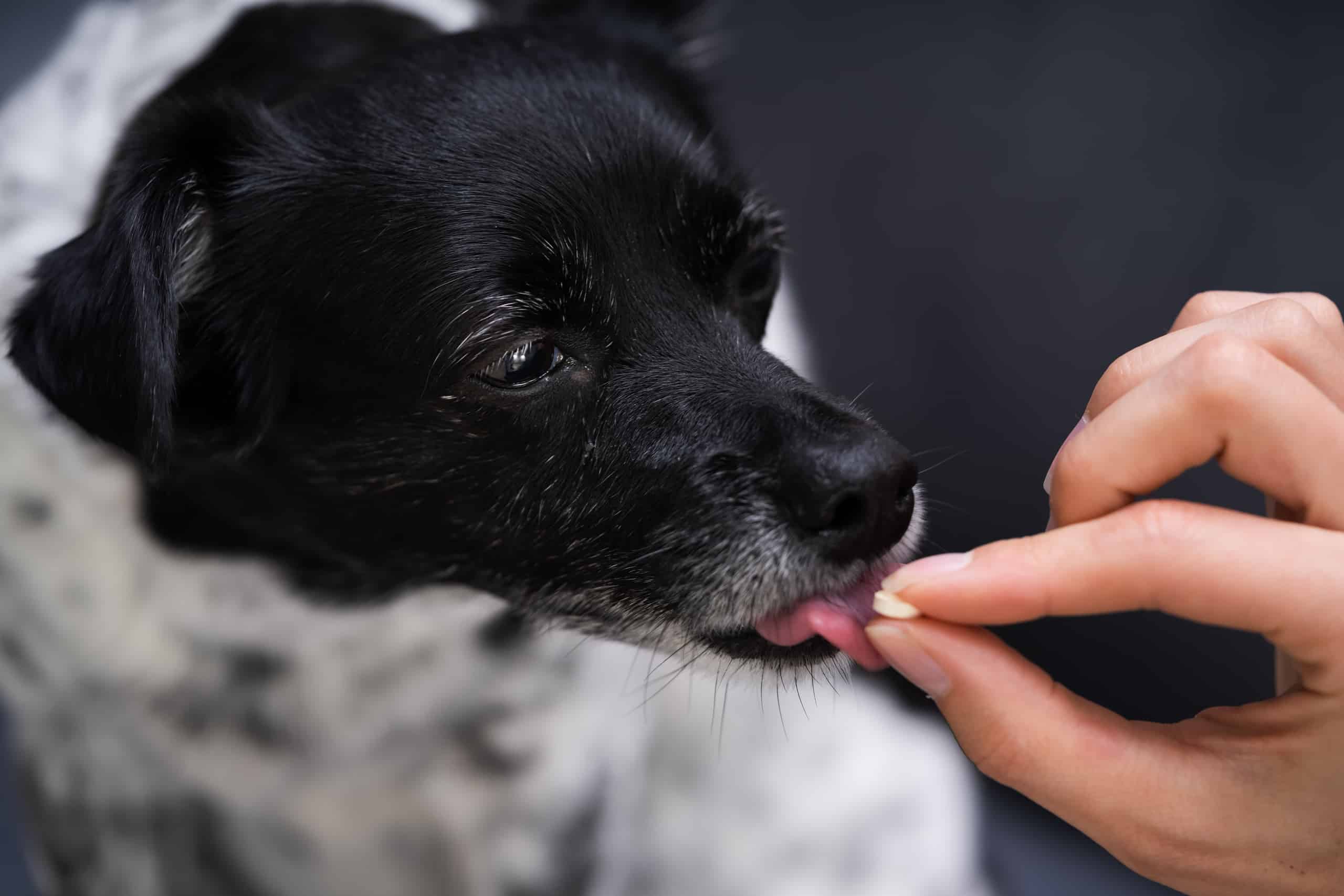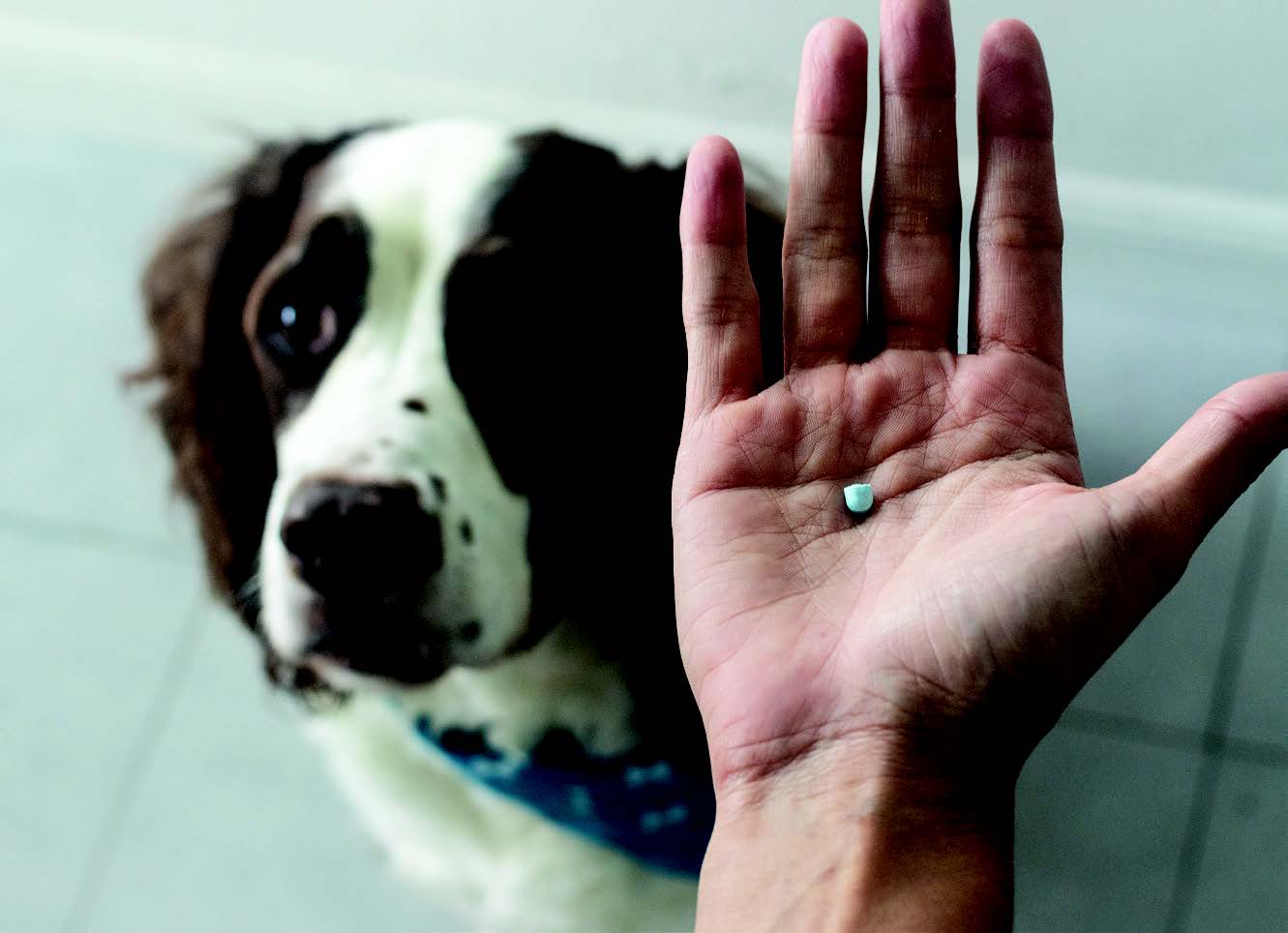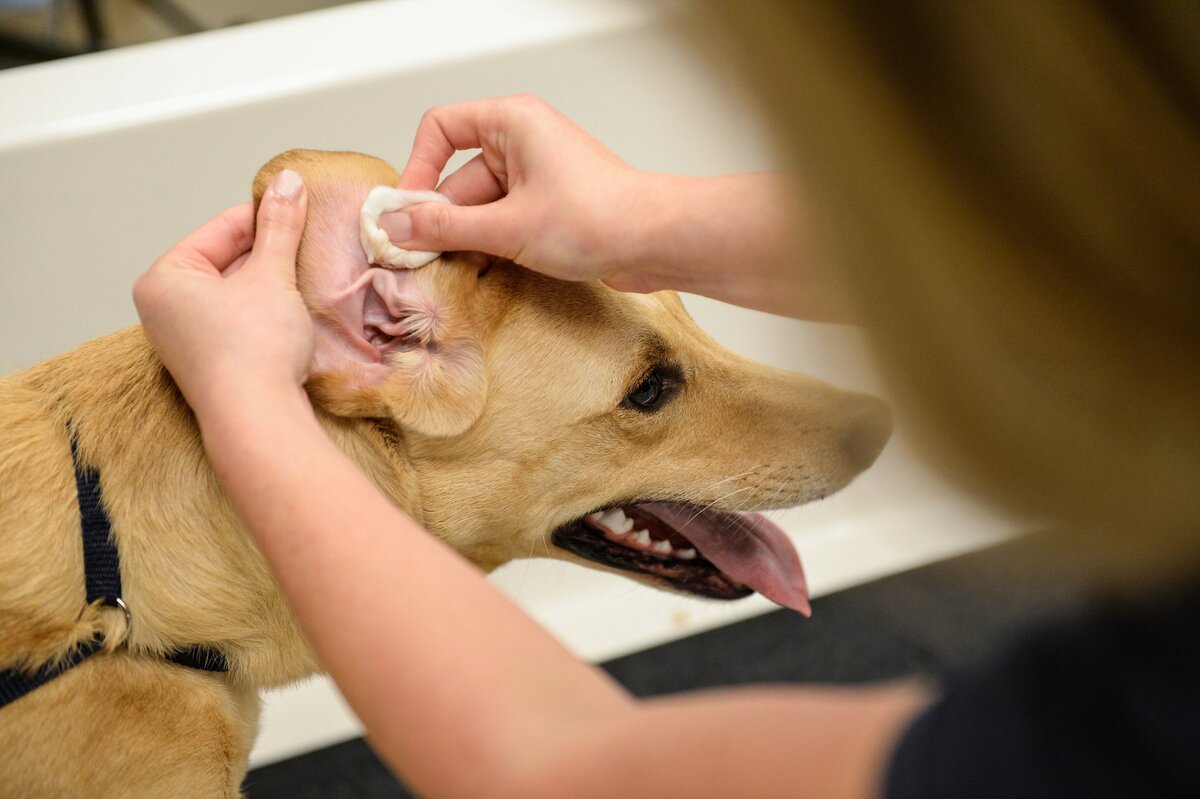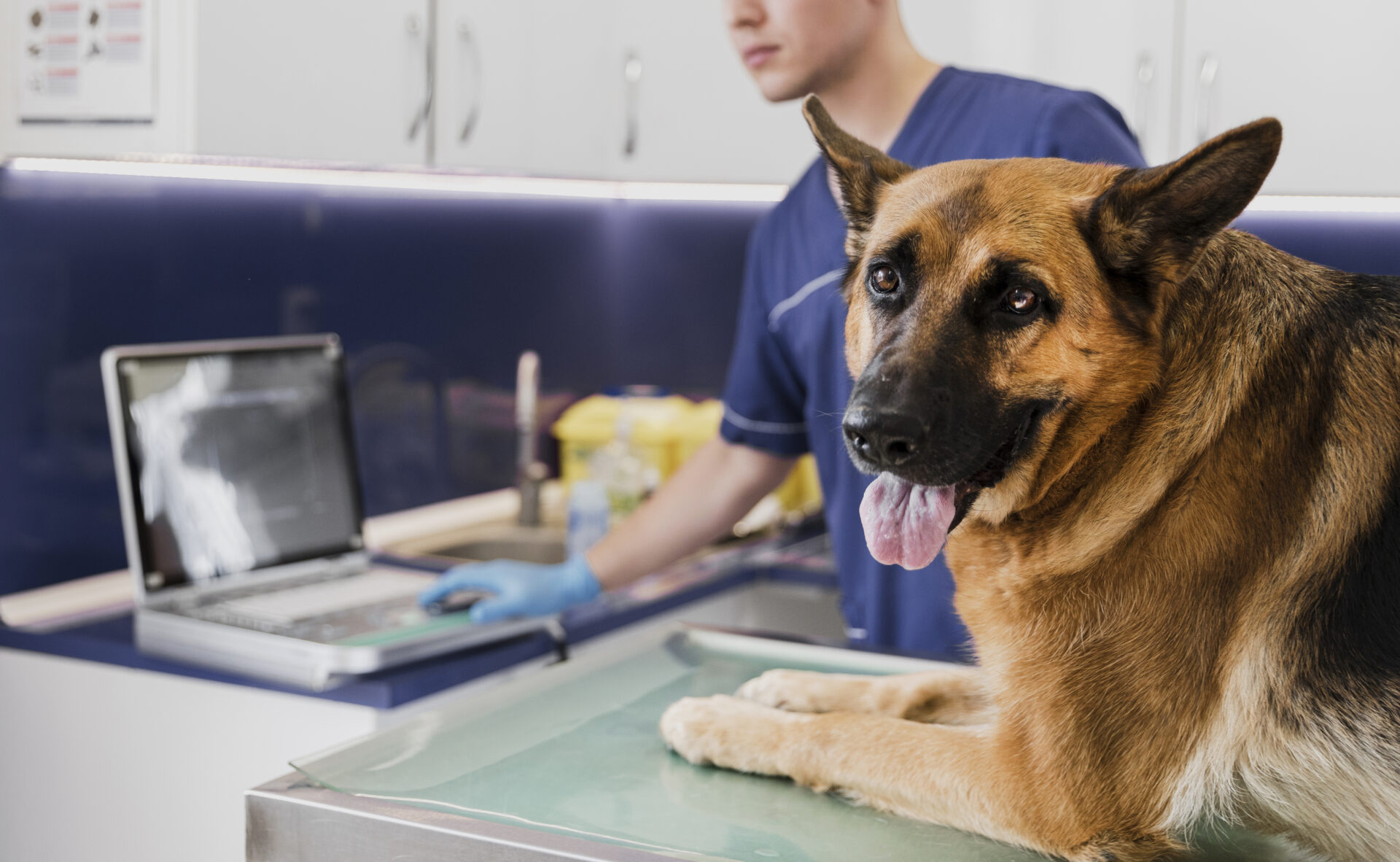Home>Health & Wellness>Common Health Issues>How Much Prednisone Do You Give A Dog For Allergies


Common Health Issues
How Much Prednisone Do You Give A Dog For Allergies
Published: January 26, 2024
Learn about common health issues in dogs and how much prednisone to give for allergies. Find helpful tips and advice for managing your dog's health.
(Many of the links in this article redirect to a specific reviewed product. Your purchase of these products through affiliate links helps to generate commission for Pawsomeoldies.com, at no extra cost. Learn more)
Table of Contents
Introduction
Prednisone is a commonly prescribed medication for treating various health issues in dogs, including allergies. As a pet owner, it's natural to be concerned about your furry friend's well-being, especially when it comes to managing allergic reactions. Understanding the appropriate use of prednisone and its potential impact on your dog's health is crucial for providing effective care.
When it comes to allergies in dogs, the symptoms can range from mild irritation to severe discomfort. Itching, redness, swelling, and skin irritation are common signs that your dog may be experiencing an allergic reaction. In such cases, prednisone can be a valuable tool in alleviating these symptoms and improving your dog's quality of life.
However, it's essential to approach the use of prednisone with caution and awareness. While this medication can offer relief from allergic reactions, it also carries potential risks and side effects that need to be carefully managed. Finding the right balance between providing relief for your dog's allergies and minimizing the impact of prednisone on their overall health requires a thoughtful and informed approach.
In this comprehensive guide, we will delve into the intricacies of using prednisone to address allergies in dogs. From understanding the appropriate dosage to monitoring potential side effects, we will equip you with the knowledge and insights needed to make informed decisions about your dog's health. By the end of this article, you will have a deeper understanding of how to navigate the use of prednisone for allergies in dogs, empowering you to provide the best possible care for your beloved pet.
Understanding Prednisone and its Use in Dogs
Prednisone is a synthetic corticosteroid that mimics the effects of cortisol, a hormone produced by the adrenal glands. In dogs, prednisone is commonly prescribed to manage a wide range of health issues, including allergic reactions. When a dog experiences an allergic response, the immune system becomes overactive, leading to inflammation and discomfort. Prednisone works by suppressing this overactive immune response, thereby reducing inflammation and alleviating the symptoms of allergies.
The use of prednisone in dogs requires a nuanced understanding of its mechanism of action and potential impact on their health. While it can be highly effective in providing relief from allergic symptoms, it is essential to use this medication judiciously and under the guidance of a veterinarian. Prednisone should never be administered to dogs without proper veterinary supervision, as its misuse can lead to adverse effects.
When prescribed for allergies, prednisone helps to alleviate itching, redness, swelling, and other discomforting symptoms. It can provide much-needed relief for dogs suffering from allergic skin conditions, insect bites, or environmental allergens. By reducing inflammation, prednisone can significantly improve a dog's quality of life during allergic episodes.
It's important to note that prednisone is not a cure for allergies in dogs. Instead, it serves as a valuable tool for managing and mitigating the symptoms of allergic reactions. Additionally, prednisone should be used as part of a comprehensive treatment plan that may include identifying and avoiding allergens, implementing dietary changes, and using other medications as recommended by a veterinarian.
Understanding the role of prednisone in managing allergies in dogs involves recognizing both its potential benefits and limitations. While it can provide relief from acute allergic episodes, its prolonged use or inappropriate dosage can lead to adverse effects. Therefore, pet owners should approach the use of prednisone with a well-informed perspective, prioritizing their dog's well-being and closely following their veterinarian's guidance.
By gaining a deeper understanding of how prednisone functions and its specific application in addressing allergies in dogs, pet owners can make informed decisions about their dog's health and well-being. This knowledge empowers them to work collaboratively with veterinarians to ensure the safe and effective use of prednisone as part of their dog's allergy management plan.
Determining the Correct Dosage for Allergies
When it comes to determining the correct dosage of prednisone for managing allergies in dogs, precision and careful consideration are paramount. The appropriate dosage is influenced by various factors, including the dog's size, weight, overall health, and the severity of the allergic symptoms. It is crucial to emphasize that only a qualified veterinarian can accurately assess these variables and prescribe the optimal dosage for a dog's specific needs.
Veterinarians typically begin by conducting a thorough evaluation of the dog's condition, taking into account the nature and intensity of the allergic reactions. This assessment helps in determining the initial dosage of prednisone required to alleviate the symptoms effectively. In many cases, a veterinarian may prescribe a higher initial dosage, known as a "loading dose," to promptly address the acute allergic manifestations.
Following the administration of the loading dose, the veterinarian will carefully monitor the dog's response to the medication. This observation period is essential for gauging the effectiveness of the initial dosage and assessing any potential side effects. Based on the dog's individual response, the veterinarian may then adjust the dosage to achieve the optimal balance between symptom relief and minimizing the risk of adverse effects.
In addition to the initial loading dose, the veterinarian will establish a maintenance dosage tailored to the dog's specific needs. This maintenance dosage aims to sustain the therapeutic effects of prednisone while minimizing the potential for long-term complications. The maintenance dosage is often lower than the initial loading dose, reflecting the transition from acute symptom management to ongoing allergy control.
It is important to highlight that the duration of prednisone treatment for allergies can vary based on the dog's response and the underlying causes of the allergic reactions. In some cases, prednisone may be prescribed for short-term use during acute allergic episodes, while in other instances, it may be part of a longer-term management plan for chronic allergies.
Throughout the treatment process, pet owners should maintain open communication with the veterinarian, reporting any changes in the dog's condition or behavior. This collaborative approach enables the veterinarian to make informed adjustments to the prednisone dosage as needed, ensuring that the treatment remains tailored to the dog's evolving needs.
By entrusting the determination of the correct prednisone dosage to a qualified veterinarian, pet owners can rest assured that their dog's allergy management plan is founded on expert assessment and personalized care. This approach prioritizes the dog's well-being and safety, aligning with the overarching goal of providing effective relief from allergic symptoms while minimizing the potential risks associated with prednisone use.
Potential Side Effects and Risks
While prednisone can be highly effective in managing allergic reactions in dogs, it is crucial to be mindful of the potential side effects and risks associated with its use. Understanding these considerations is essential for pet owners and veterinarians alike, as it enables them to make informed decisions and proactively address any adverse effects that may arise.
One of the primary concerns regarding prednisone use in dogs is the potential for side effects related to its systemic impact on the body. Corticosteroids such as prednisone can affect various physiological processes, and prolonged or high-dose usage may lead to a range of adverse effects. Common side effects of prednisone in dogs include increased thirst and urination, changes in appetite, weight gain, and behavioral alterations. Additionally, prednisone can weaken the immune system, making dogs more susceptible to infections.
Long-term use of prednisone can also contribute to more severe side effects, including gastrointestinal issues such as ulcers, as well as musculoskeletal problems like muscle weakness and decreased bone density. Furthermore, prednisone may impact the function of the adrenal glands, potentially leading to adrenal insufficiency when the medication is discontinued after prolonged use.
Another significant consideration is the potential for prednisone to exacerbate existing health conditions or interact with other medications. Dogs with pre-existing conditions such as diabetes, hypertension, or gastrointestinal disorders may experience worsening symptoms when prescribed prednisone. Moreover, certain medications, when combined with prednisone, can lead to adverse interactions, underscoring the importance of comprehensive medical history reviews and close monitoring by the veterinarian.
In addition to physical side effects, prednisone can also influence a dog's behavior and mood. Some dogs may exhibit increased restlessness, anxiety, or changes in temperament while undergoing prednisone treatment. These behavioral alterations can impact the dog's overall well-being and may necessitate adjustments to the treatment plan to mitigate such effects.
It is essential for pet owners to remain vigilant and observant while their dog is undergoing prednisone treatment, promptly reporting any concerning changes to the veterinarian. By closely monitoring the dog's response to prednisone, veterinarians can proactively address emerging side effects and make necessary adjustments to the treatment plan, ensuring the dog's safety and comfort throughout the course of treatment.
In summary, while prednisone can provide valuable relief from allergic symptoms in dogs, it is imperative to be mindful of the potential side effects and risks associated with its use. Through proactive monitoring, open communication with the veterinarian, and a comprehensive understanding of these considerations, pet owners can navigate the use of prednisone for allergies in dogs with attentiveness and care, prioritizing their beloved pet's well-being above all else.
Monitoring and Adjusting the Dosage
Monitoring the dog's response to prednisone and making necessary adjustments to the dosage are critical aspects of ensuring the safe and effective management of allergies. Throughout the course of prednisone treatment, vigilant observation and proactive communication with the veterinarian play pivotal roles in optimizing the dosage to meet the dog's evolving needs.
Upon initiating prednisone therapy, the veterinarian establishes a framework for monitoring the dog's response to the medication. This involves regular check-ins to assess the dog's overall well-being, observe any changes in behavior or symptoms, and evaluate the impact of prednisone on the allergic reactions. By maintaining open communication with the veterinarian and providing detailed updates on the dog's condition, pet owners contribute to the collaborative effort in monitoring the treatment's effectiveness.
During the monitoring phase, the veterinarian may conduct follow-up examinations to gauge the dog's progress and assess any potential side effects. These evaluations enable the veterinarian to make informed decisions regarding the need for dosage adjustments or additional supportive measures. By closely tracking the dog's response to prednisone, the veterinarian can identify early indicators of adverse effects or insufficient symptom relief, prompting timely modifications to the treatment plan.
Adjusting the prednisone dosage is a dynamic process that reflects the dog's individual response and the evolving nature of allergic reactions. Veterinarians may recalibrate the dosage based on the dog's weight changes, alterations in symptoms, or the emergence of side effects. This personalized approach ensures that the dosage remains tailored to the dog's specific needs, optimizing the balance between symptom management and minimizing potential risks.
In cases where the initial dosage fails to adequately alleviate the allergic symptoms, the veterinarian may opt to increase the prednisone dosage within safe and appropriate limits. Conversely, if the dog exhibits a favorable response with minimal side effects, the veterinarian may consider gradually tapering the dosage to the lowest effective level. This careful titration aims to maintain the therapeutic benefits of prednisone while mitigating the potential for long-term complications.
Throughout the monitoring and adjustment process, pet owners play a crucial role in providing insights into the dog's daily experiences and any changes in behavior or well-being. By actively participating in the observation and reporting process, pet owners contribute to the collaborative effort in optimizing the prednisone dosage for their dog's allergy management.
By prioritizing close monitoring and judicious dosage adjustments, veterinarians and pet owners work in tandem to ensure that the dog receives the most effective and tailored prednisone treatment for their allergies. This proactive approach underscores the commitment to the dog's well-being and the pursuit of optimal therapeutic outcomes while minimizing the potential risks associated with prednisone use.
Conclusion
In conclusion, the use of prednisone for managing allergies in dogs necessitates a comprehensive understanding of its application, potential impact, and the critical role of vigilant monitoring. Prednisone serves as a valuable tool in alleviating the discomforting symptoms associated with allergic reactions, offering much-needed relief for dogs experiencing itching, redness, swelling, and skin irritation. However, the safe and effective use of prednisone requires a thoughtful and collaborative approach between pet owners and veterinarians.
By recognizing the nuanced dynamics of prednisone's mechanism of action and its potential side effects, pet owners can navigate the treatment process with attentiveness and care. It is essential to emphasize that prednisone should only be administered to dogs under the guidance and supervision of a qualified veterinarian. This ensures that the dosage is tailored to the dog's specific needs, taking into account factors such as size, weight, overall health, and the severity of allergic symptoms.
Throughout the course of prednisone treatment, proactive monitoring and open communication with the veterinarian are paramount. This collaborative effort enables timely adjustments to the dosage based on the dog's individual response, ensuring that the treatment remains optimized for both symptom relief and the mitigation of potential risks. By actively participating in the observation and reporting process, pet owners contribute to the holistic approach in managing their dog's allergies with prednisone.
In essence, the use of prednisone for allergies in dogs underscores the commitment to providing compassionate and effective care. By prioritizing the dog's well-being and safety, pet owners and veterinarians work in tandem to navigate the complexities of prednisone treatment, striving to achieve optimal therapeutic outcomes while minimizing the potential risks associated with its use. This collaborative and informed approach empowers pet owners to make well-informed decisions about their dog's health, ensuring that the use of prednisone for allergies aligns with the overarching goal of enhancing the dog's quality of life.
Ultimately, the judicious use of prednisone, coupled with attentive monitoring and personalized care, reflects the dedication to providing the best possible support for dogs grappling with allergic reactions. Through this holistic and informed approach, pet owners can navigate the use of prednisone for allergies with confidence and compassion, prioritizing their beloved pet's well-being above all else.














